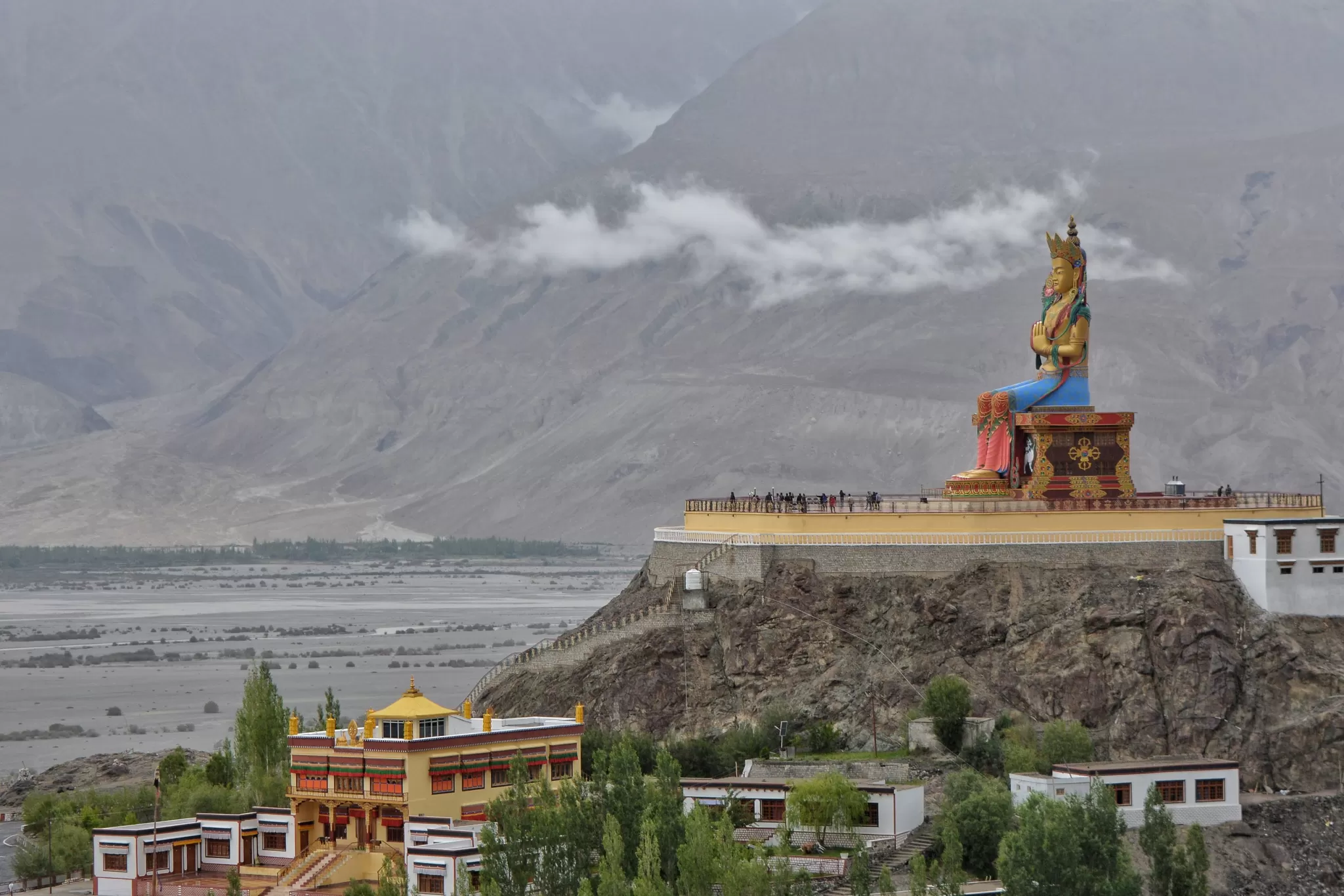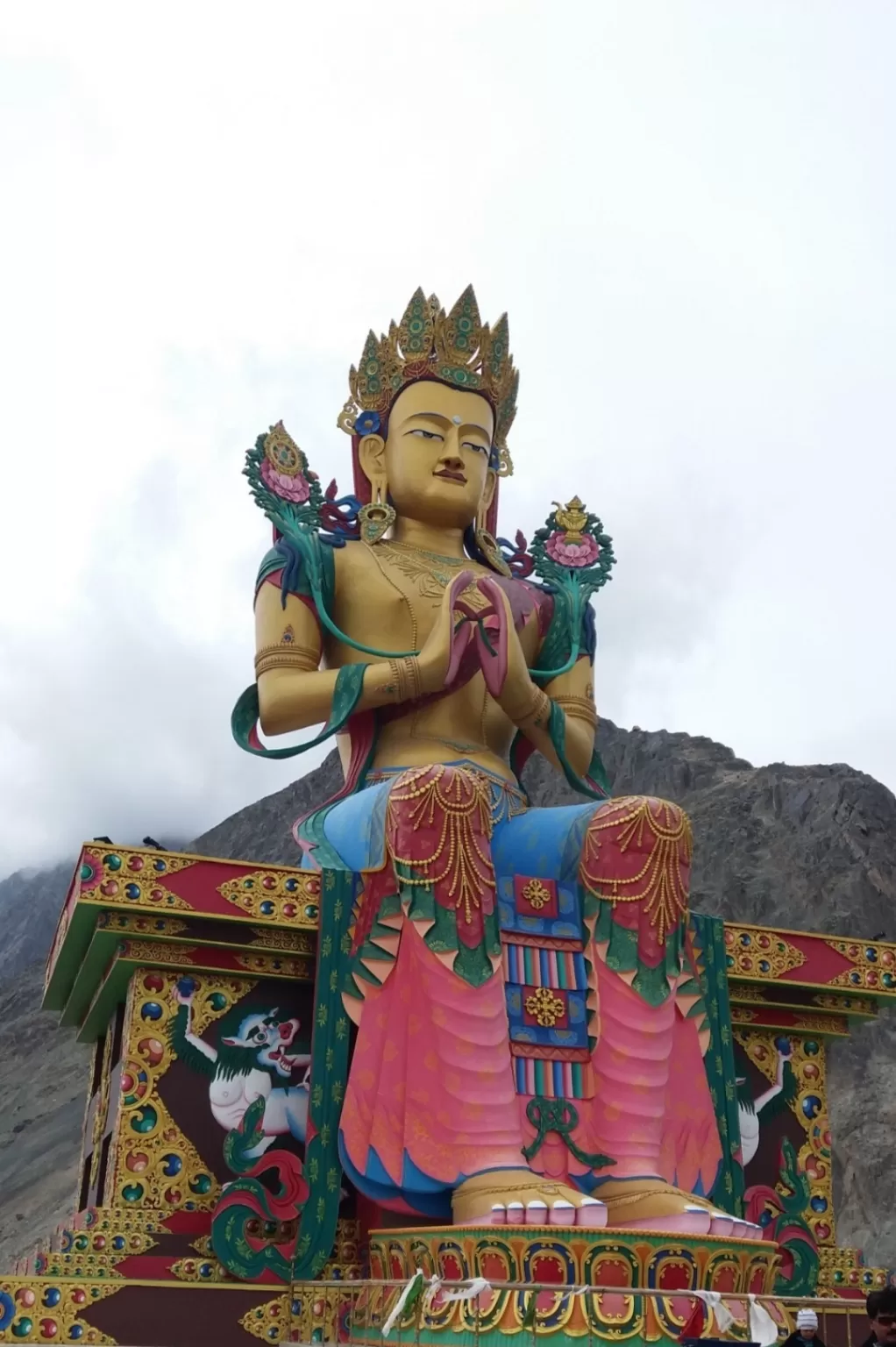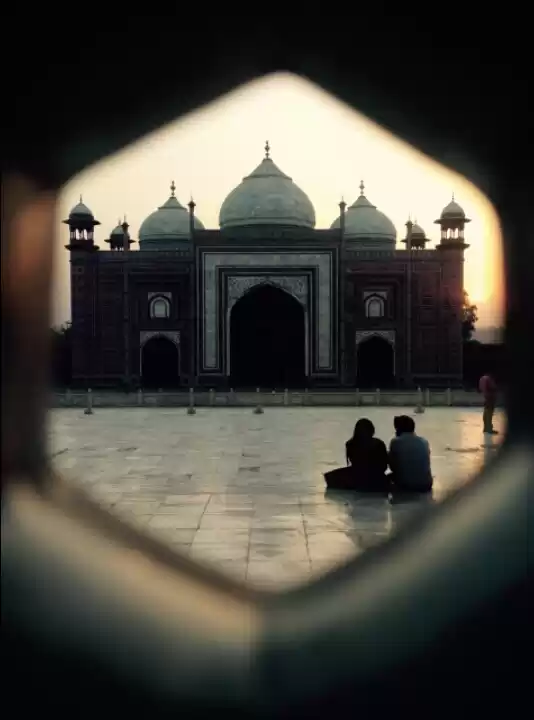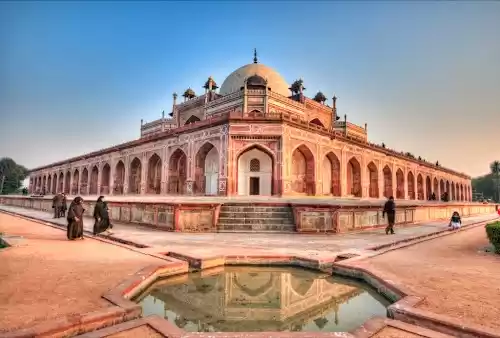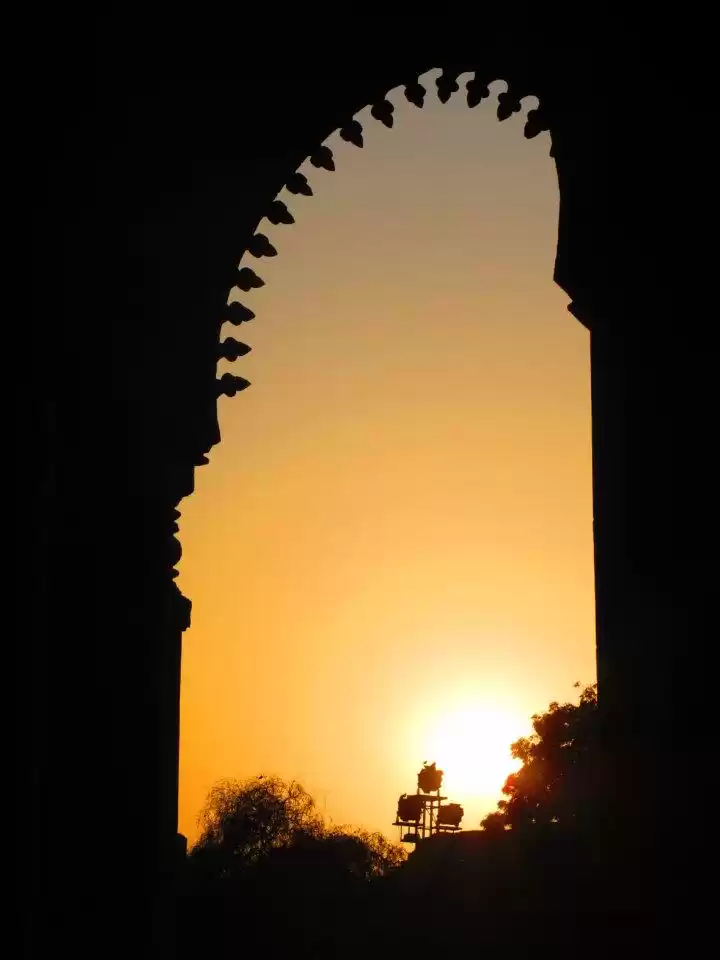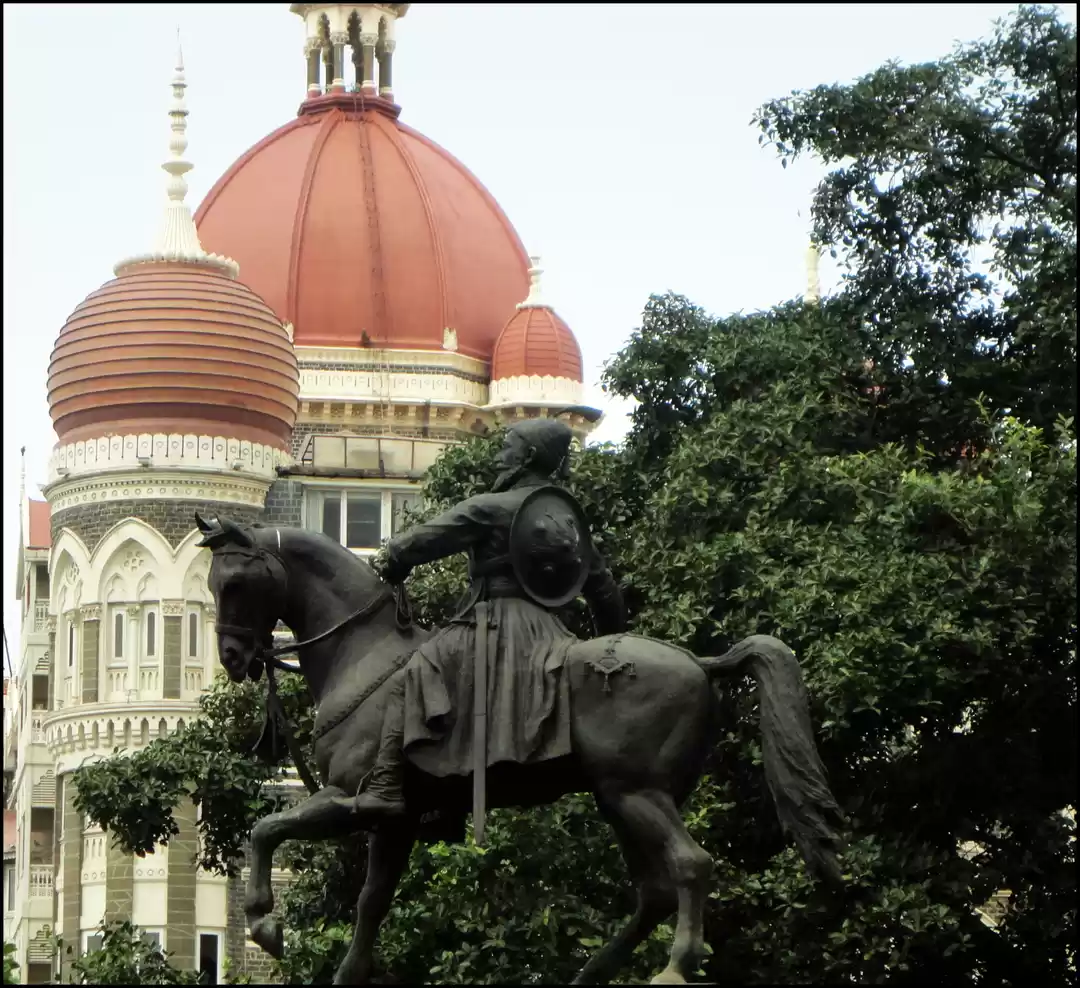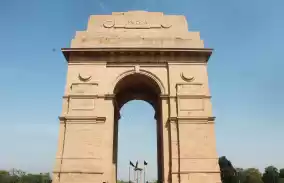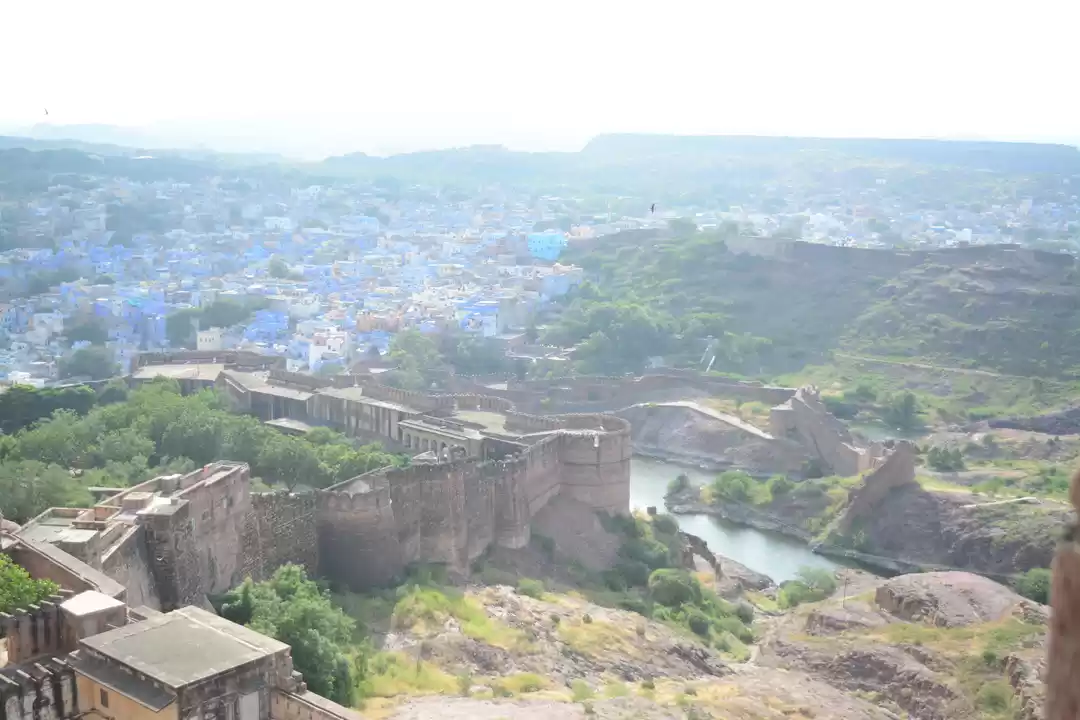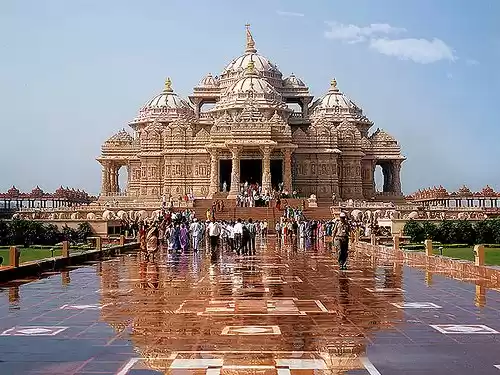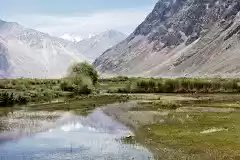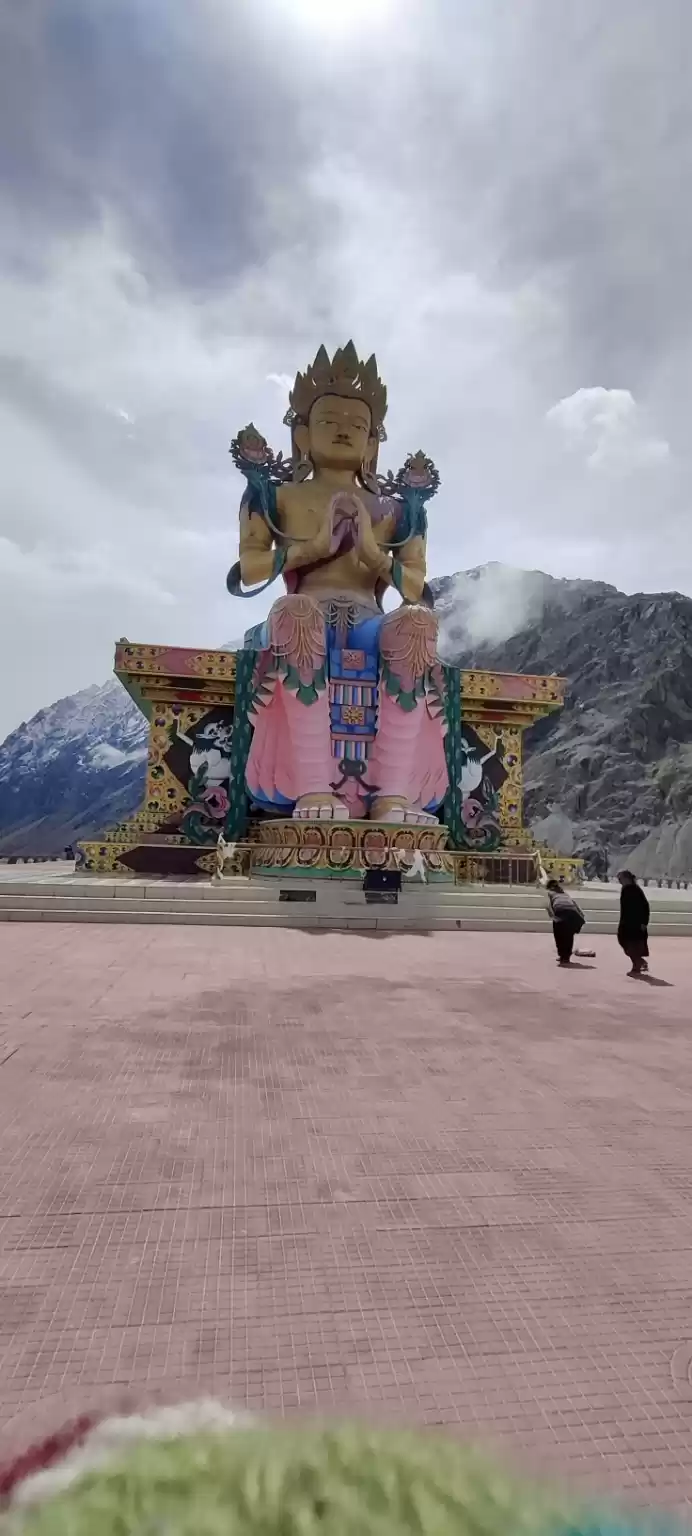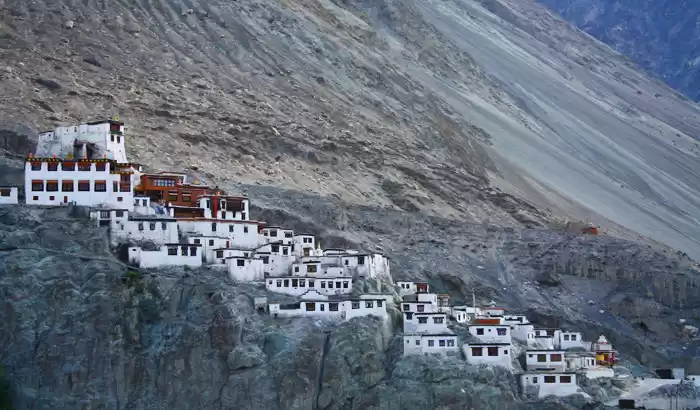Are you looking for a unique and unforgettable travel experience in India? Do you want to explore a place where ancient history, culture, and nature blend together in harmony? If yes, then you should definitely add Diskit Monastery to your bucket list. Diskit Monastery is the oldest and largest Buddhist monastery in the Nubra Valley of Ladakh, India. It is a stunning example of Tibetan-style architecture, and a sacred site for Buddhists. It is also home to a giant statue of Maitreya Buddha, the future Buddha, that overlooks the valley and the Shyok River.
In this article, we will take you on a virtual tour of Diskit Monastery, and tell you everything you need to know about its history, location, architecture, attractions, festivals, and how to reach it.
History of Diskit Monastery

Diskit Monastery was founded in the 14th century by Changzem Tserab Zangpo, a disciple of Tsongkhapa, the founder of the Gelugpa sect of Tibetan Buddhism. The monastery belongs to the Yellow Hat sect of Buddhism, and is the sub-gompa of Thiksey Monastery. According to a legend, the founder of the monastery had a vision of a place where he saw a white lion, and decided to build the monastery there. Another legend says that the monastery was built on the ruins of an ancient palace, and that there is a demon trapped in the basement of the monastery, who is prevented from escaping by a statue of a guardian deity. The monastery has witnessed several wars and invasions, and has been renovated and expanded several times. It is now a complex of several buildings, temples, shrines, and stupas, that house a rich collection of relics, scriptures, paintings, and statues.
Architecture of Diskit Monastery
Diskit Monastery is built on a hilltop, and has a typical Tibetan-style architecture, with whitewashed walls, red roofs, and colorful flags. The main entrance of the monastery is marked by a large prayer wheel, which is turned by the visitors and the monks to invoke blessings. The main building of the monastery is the Dukhang, or the prayer hall, which is decorated with frescoes, thangkas, and statues of various deities and lamas.
The most impressive feature of the Dukhang is the cupola, or the dome, which has a skylight that allows natural light to enter the hall. The cupola also has a beautiful painting of the mandala of Kalachakra, or the wheel of time, which represents the cosmic order and harmony. The Dukhang also has a storehouse, where the sacred texts and scriptures are kept. The storehouse has a wooden door, which is carved with the eight auspicious symbols of Buddhism.
The Lachung Temple, or the small temple, is located near the Dukhang, and is dedicated to Tsongkhapa, the founder of the Gelugpa sect. The Lachung Temple has a statue of Tsongkhapa, and a mural depicting the Four Heavenly Kings, who are the guardians of the four directions. The mural is one of the oldest paintings in the monastery, and was recently restored by the Archaeological Survey of India.
Attractions of Diskit Monastery
Diskit Monastery has many attractions that make it a must-visit destination for anyone who loves culture, nature, and spirituality.
1. The most prominent attraction of the monastery is the 32 metre high statue of Maitreya Buddha, which is located near the monastery, and faces the Shyok River towards Pakistan. The statue was inaugurated by the Dalai Lama in 2010, and symbolizes three ideas: protection, prevention, and promotion. The statue protects the people of Nubra Valley from war and violence, prevents the negative forces from harming the environment and the culture, and promotes peace and harmony among the people. The statue is made of copper, and has a gilded face and a crown. It is surrounded by a garden, and offers a panoramic view of the valley and the river. The statue is open from 7 am to 7 pm, and there is no entry fee. However, photography is not allowed inside the statue.
2. Another attraction of the monastery is the festival of the scapegoat, which is held in February every year. The festival is also known as Dosmoche, or the festival of the hanging prayer flags. The festival is celebrated to mark the end of the winter, and to ward off the evil spirits and bring good luck for the new year. The festival involves a ritual of making a scapegoat, which is a human-like figure made of dough, and decorated with clothes and ornaments. The scapegoat is then taken to a nearby hill, and burned, while the monks perform the Chham Dance, or the masked dance, in the monastery. The Chham Dance is a colorful and lively performance, where the monks wear masks and costumes, and enact the stories of the deities and the demons. The monastery is open from 8 am to 6 pm, and there is a nominal entry fee of Rs. 30 per person.
3. One of the best things about visiting Diskit Monastery is the opportunity to enjoy the scenic beauty and the natural diversity of the Nubra Valley. The valley is also known as the valley of flowers, as it has a variety of flora and fauna, such as apricot trees, lavender fields, wild roses, and camels. The valley is divided by the Shyok and the Nubra rivers, which form a Y-shaped confluence near Diskit. The valley also has some other attractions, such as the sand dunes of Hunder, the hot springs of Panamik, and the Khardung La pass, which is the highest motorable road in the world.
How to Reach Diskit Monastery
Diskit Monastery is located about 120 km from Leh, the capital of Ladakh, and can be reached by road. The road journey from Leh to Diskit is an adventure in itself, as it passes through some of the most rugged and spectacular landscapes in the world. The road crosses the Khardung La pass, which is the highest motorable road in the world, at an altitude of 5,359 metres. The road then descends into the Nubra Valley, and follows the Shyok River till Diskit.
The road is well-maintained and paved, but can be slippery and narrow at some places. The road is also prone to landslides and snowfall, especially during the winter months. Therefore, it is advisable to check the weather and the road conditions before planning the trip. The road journey from Leh to Diskit takes about 4 to 5 hours, depending on the traffic and the stops.
The best time to visit Diskit Monastery is from June to September, when the weather is pleasant and the roads are open and accessible. However, one can also visit the monastery during the winter months, when the valley is covered with snow and the festival of the scapegoat is celebrated. However, one has to be prepared for the cold and the road closures, and carry enough warm clothes and supplies.
Diskit Monastery is a remarkable place that offers a glimpse into the rich and diverse culture, history, and nature of Ladakh. It is a place where you can experience the serenity and the spirituality of Buddhism, and admire the beauty and the majesty of the Nubra Valley. It is a place where you can witness the ancient traditions and the modern innovations of the people of Ladakh, and join them in their celebrations and festivals. It is a place where you can create memories that will last a lifetime. If you are planning to visit Ladakh, you should not miss the opportunity to visit Diskit Monastery, and explore its wonders and attractions.

